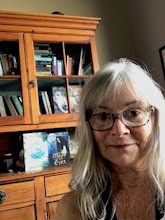The ocean liner from San Francisco docked in Manila harbor just before sunset on August 27th, 1939. The view from the boat revealed a tropical paradise; a forest of coconut palms filled in the landscape behind long empty beaches and in the distance, cloud shadows moved across blue mountains. The tang of sea air coupled with the sweet perfume of flowers wafted by on the warm breeze. Ramsey and I stood on deck until only a faint line of orange remained on the horizon. Here so close to the equator night fell suddenly, like a black velvet curtain.
That night we spent packing and it wasn’t until the next morning that I noticed the ominous array of naval ships in the harbor. Sunlight glinted off their otherwise dull metallic surfaces where sailors were busy on the decks. Ten thousand U.S. troops and twenty thousand Philippine Army soldiers inhabited this island. Despite the warm sun I shivered, realizing how far from home we were and what the future might bring.
I watched wooden carts pulled by water buffalo and donkeys as we walked down the gangplank, the harbor bustling with commerce. The Spanish city of Intramuros was not far and as we left the ship the walls and turrets surrounding the original city came into view. Above the walls Cathedral domes stood out amid other medieval sandy brick buildings covered with bright bougainvillea and surrounded with mimosa trees in full flower. The Philippines had been in the hands of the Spanish from the 1500’s until the late 1800’s when it was fought over in the Spanish-American war. Intramuros had originally been designed to segregate the ruling Spanish elite from the Filipinos and other ethnic minorities such as the Chinese, Japanese and Indians. The walled city now had the look of an aging film star, all shadow and light and crumbling brick and stone taken over by flowers and vines. In the far distance to the south, clouds were building above emerald rice paddies that criss-crossed the lower slopes of Mt. Mayon, a still active volcano.
A small honor guard with the Philippine Department band met us on the dock and Ramsey left me with the other wives, joining General Wainwright and the other officers. General MacArthur was not in attendance but there was to be a meeting held at his penthouse later in the day. This island had been his home for many years. As we left the dock I lost myself for a moment watching the dark-skinned faces of the people walking by. Some Filipino women wore bright dresses with sleeves peaked at the shoulders others, blouses of lace and wrap-around skirts, both reflecting the influence of the left over Hispanic culture. The men looked more Americanized with trousers and shirts but some wore the more traditional see-through white shirts called the barong tagalog. The women wore their hair long and elaborately twisted into neat chignons. My outfit of sunny linen, straw hat and matching bag and white gloves seemed out of place among these beautifully dressed natives.
When the ceremony was over Ramsey collected me and we climbed into the back of a jeep driven by a Filipino soldier who would take us to our temporary quarters close to Ft. Mckinley, seven miles south of Manila. We bumped in and out of ruts on the dirt road, swerving around water buffalo, children on bicycles, chickens, donkeys, and dogs, sometimes narrowly missing them. I held onto my hat, my heart racing.
I welcome any and all comments. I am revising as I go and would love to know if this is of interest to you. Thank you to all readers.

No comments:
Post a Comment